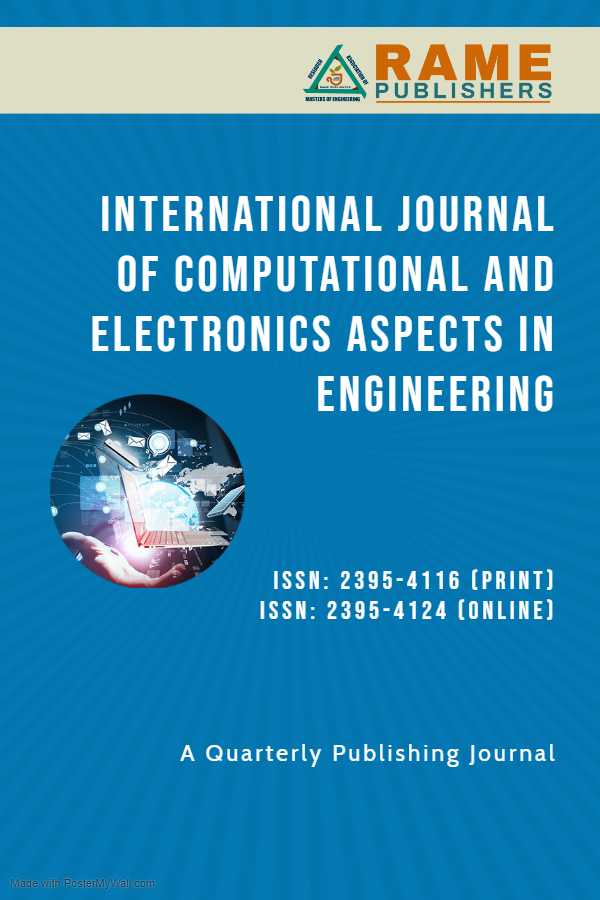Next-Generation Digital Voting System
Irshad Shah, Wrushabh Dange, Nilesh Nirgule, Dinesh Ilme
International Journal of Computational and Electronic Aspects in Engineering
Volume 2: Issue 3, July 2021, pp 71-75
Author's Information
Irshad Shah1
Corresponding Author
1Department of Computer Engineering, Smt. Radhikatai Pandav College of Engineering, Nagpur, India
Irshadshah9916@gmail.com
Wrushabh Dange1, Nilesh Nirgule1, Dinesh Ilme1
1Department of Computer Engineering, Smt. Radhikatai Pandav College of Engineering, Nagpur, India
Abstract:-
Building an electronic voting system that meets legislators' legal criteria has been a long-standing challenge. Distributed ledger technologies are a revolutionary innovation in the field of information technology. Blockchain technologies can be used in an unlimited number of ways to profit from sharing economies. All current electronic voting methods have a fundamental design problem. They're designed to be tightly controlled, which means there seems to be one source in charge of the code base, database, and system outputs, as well as the monitoring tools to ensure the results are accurate. Due to the lack of an independently verified output, these centralized systems struggle to gain the trustworthiness necessary by voters, either restricting voter participation or casting doubt on the election's declared results. The study seeks to use the cryptographic ledger as a safe transaction database to establish an immutable, verifiable, and secure online voting system. Voters will be able to independently audit the inclusion of their vote, as well in the election's overall outcome, using this public ledger, while knowing that the results cannot be altered due to the immutability of the Blockchain.Index Terms:-
blockchain, smart contract, E-voting, hash, security, Ethereum, decentralized, digitalizingREFERENCES
-
Fujioka A., Okamoto T., Ohta K., “A practical secret voting scheme for large scale elections”, Lecture Notes in Computer Science, Springer, Berlin, Heidelberg, vol 718, 1993,. https://doi.org/10.1007/3-540-57220-1_66.
- Magkos, E.; Burmester, M.; Chrissikopoulos, V., “Receipt-Freeness in Large-Scale Elections without Untappable Channels”, Springer: Boston, MA, USA, 2001.
- Nakamoto, S., “Bitcoin: A Peer-To-Peer Electronic Cash System [EB/OL]”, 12 February 2019. Available online: https://bitcoin.org/en/bitcoin-paper (accessed on 22 October 2020).
- Steve Ellis, Ari Juels, and Sergey Nazarov, “ChainLink: A Decentralized Oracle Network”, 2017. Available at: https://link.smartcontract.com/whitepaper
- R. Bohme, N. Christin, B. Edelman, and T. Moore: “Bitcoin: Economics, Technology, and Governance”, Journal Of Economic Perspectives, Vol-29, No.2, Spring 2015, Pages 213-238.
- Chaum, David, "Blind signatures for untraceable payments", Advances in Cryptology Proceedings of Crypto, Volume 82 (3): 199–203, 1983.
- Jelurida, IGNIS Crowdsale, 5 August 2017.
www.jelurida.com/sites/default/files/JeluridaWhitepaper.pdf
To view full paper, Download here
To View Full Paper
For authors
Author's guidelines Publication Ethics Publication Policies Artical Processing Charges Call for paper Frequently Asked Questions(FAQS) View All Volumes and IssuesPublishing with




